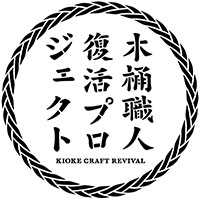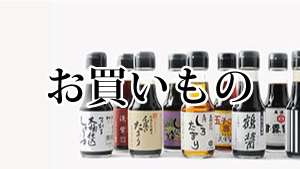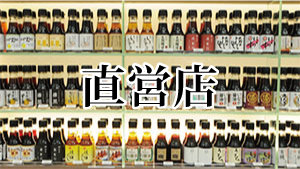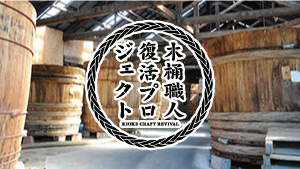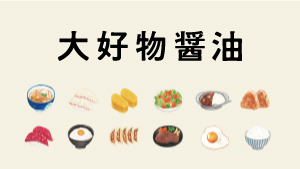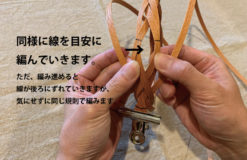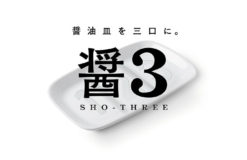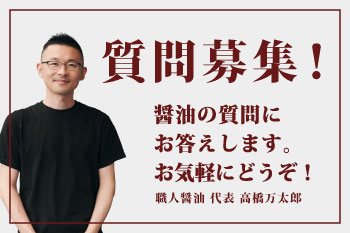木桶仕込みの蔵
ミツル醤油醸造元│Mitsuru

若き蔵人が自社醸造を復活
醤油業界の若手ホープといえば?と問われれば、城 慶典の名前を挙げたいと思います。大学入学前から自社での醸造を復活させる決意をして、着実にチャレンジを積み重ねている若きつくり手の現在進行形の物語です。
Young brewer revives traditional soy sauce
Whose the face of hope in the soy sauce industry? If asked, I would say Yoshinori Jo. This is a story about a young brewer who is determined to create a brewing company.

仕込みを復活させるということ
このサイトで2010年から連載いただいている「醤油仕込み復活 挑戦の奮闘記」。その城さんの醤油がいよいよ2013年2月に初搾りの時を迎えました。
* (コラム) 醤油仕込み復活 挑戦の奮闘記
「何が珍しいの?」と思われるかもしれませんが、このように仕込みを再開することは醤油業界ではとても珍しいことです。ミツル醤油は40年前に自社醸造をやめ、協業工場から醤油を購入し独自の味付けと火入れをする方式に転換しました。
これは昭和38年に制定された「中小企業近代化促進法」にそったもので、醤油の安定供給と品質向上に大きく貢献した全国的な動きだったのです。
Restoring the traditional brewing methods
“The Challenging Struggles in Reviving Soy Sauce” was added to this site in 2010. Jo’s first successful batch of soy sauce was celebrated in February 2013.* (コラム) 醤油仕込み復活 挑戦の奮闘記
What is unusual about Jo’s story? Although it may seem normal to the general public, it is incredibly rare to revive a traditional brewery in the soy sauce industry. Forty years ago, Mitsuru Soy Sauce stopped brewing operations and purchased soy sauce from a cooperative factory, using a type of heating method and adding seasonings to it.
Small businesses like Mitsuru’s, had to comply to the Law for the Promotion of Modernization of Small and Medium Enterprises (中小企業近代化促進法). Enacted in 1967, it was a nationwide movement that contributed to the improvement and stable supply of soy sauce.

醸造には場所とお金がかかる
そのためミツル醤油には、仕込みに使う道具や設備がなくなっていました。醸造業には広い空間が必要不可欠なので、まず場所を確保しなくてはなりません。仕込みの作業をする場所、麹をつくる麹室、発酵熟成させるための木桶を並べる場所・・・。
そして、道具や設備を整える段階になると、大豆を蒸す設備、小麦を炒る設備、木桶の修繕、搾る設備・・・しかも、商品が売れて商品代金を回収できるのは1年とか2年後になるわけです。これらの投資は大きなリスクも伴います。
それらを背負って仕込みの復活に挑むのはとても稀な事で、城さんが業界内からも注目されている理由なのです。
Brewing requires a great deal of land and money
As a result from the promotion law, Mitsuru Brewery lost all the tools, equipment, and the necessary amount of land used for traditional brewing methods. In the soy sauce industry, one must have a large area for all the procedures such as: a room to prepare the ingredients; a room to make koji(a naturally occurring mold) an area for constructing kioke(large wooden barrel made from Japanese cedar) and a room for fermentation.
In addition, you would also need equipment for steaming soybeans, equipment for roasting wheat, the necessary tools to repair the kioke, and a stone or wooden press to refine the soy sauce mixture. Not only that, it also takes 1-2 years to pay off the costs and begin to make earnings, so it is clear that the investment is a big risk.
It is difficult enough to challenge modern soy sauce productions, let alone revive traditional soy sauce brewing. And this is the reason why Jo is drawing attention from within the industry.


城 慶典という男
「福岡の醤油屋で城くんって知ってるかい?」と各地の醤油蔵で質問されます。普通なら他蔵の話題があがることは少ないのですが、なぜか様々な地域の生産者の口から「城 慶典」という名前が出てくるのです。
高校生の時に、「いつか自社醸造を復活させる!」と決意した城さんは、東京農業大学醸造学科に進学、長期の休みの度に各地の醤油蔵に出向き、泊まりこみで醤油づくりの手伝いをしていたのです。
「城くんは、うちで醤油つくっていたんだよ!」という蔵元は全国各地にあり、皆が師匠や親のような眼差しで城さんの挑戦を見守っているのです。
A man named Yoshinori Jo
“Do you know Yoshinori Jo-kun, brewer of the soy sauce shop in Fukuoka?” is the question that arises in various soy sauce shops around the country. Normally, breweries do not discuss other soy sauce shops, however, the name “Yoshinori Jo” always comes out of the mouths of brewers throughout Japan.
When Jo was a high school student, he decided, “I want to create my own brewery someday!” Since then, he enrolled the Department of Brewery at Tokyo Agricultural University to help make soy sauce during long holidays, oftentimes working through the night. He had to be transferred to numerous breweries across the country in order to do this work.
News quickly spread of Jo reviving a traditional brewing all over the country, oftentimes saying, “Jo-kun is making soy sauce at his home!” Many veteran brewers watched over Jo’s challenges as if they were his mentor or parent.
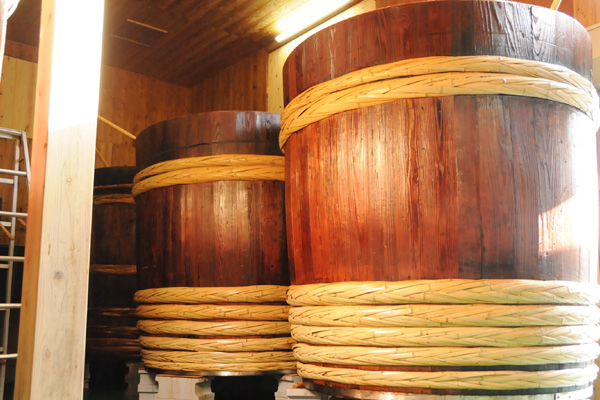
代々伝承されているつくり方
醤油のつくり方の基本的なところはどの蔵も同じです。ただ、細かい部分は違います。麹づくりの温度管理や時間、使用する道具、諸味を撹拌する頻度や桶の管理の仕方など・・・
一般的に醤油づくりは家業として続いていることが多く、その蔵の「代々伝承されているつくり方」があって、それを受け継ぎながら少しづつ改良を加えていくものです。
ところが、城さんの場合は受け継ぐべき「幹の部分」がなく、しかも、福岡県糸島市の土地にあわせた最良の方法を導きだしていかなくてはならないわけです。
Passing down tradition
The basics of soy sauce-making are the same for every brewery. However, the small details vary between factory to factory, such as preference of which tools to use during the fermenting process; temperature control and timing while making koji; frequency of stirring during the morning; managing the kioke, etc.
Generally, soy sauce breweries are continued as a family business. Many of these successors will gradually improve the brewery while inheriting it. This is why they use the term “passing down tradition.”
However, in Jo’s case, he didn’t inherit any brewery. He had to find the most suitable land for brewing soy sauce in Itoshima, Fukuoka Prefecture.

だけど、それがないので・・・
学生時代から各地の蔵のつくりを体験しているため、それぞれの良い部分を取り入れて独自の工夫を施しています。
自分が良いと感じたものは積極的に取り入れて、時には「どうしてこのような手法をとっているのか?」と、とことん質問し、時には実物を送ってもらい研究を重ねたりと、柔軟な姿勢が城さんのスタイルです。
But because there isn’t…
When Jo was a student, he had experience working at various breweries. When reviving his own, he would take their good ideas, and adopt it into his own brewery.
Oftentimes people ask Jo, “Why did you choose this approach?” His method is by conducting research, implementing these ideas into action, and analyzing the results. If the idea doesn’t work out, then he will try and adapt to what he is given. Jo’s approach to brewing has always been flexible.

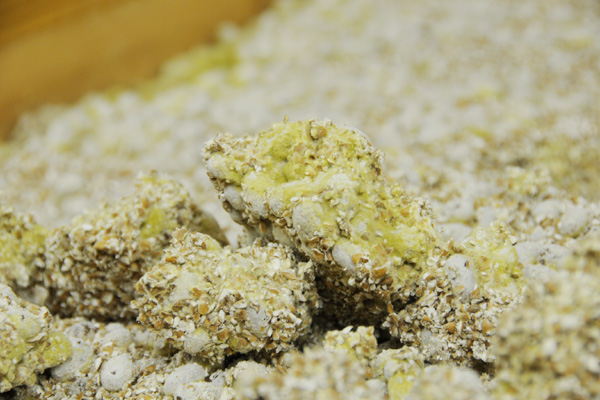
大胆に大きくした麹蓋。
例えば、「麹づくり」は醤油づくりにおいて、最も重要ともいえる工程です。ここで使われる伝統的な「麹蓋」という道具を、大胆に大型化し底板部分をメッシュ素材にしています。
「均一に温度管理するにはこの形が良いと思いました。元々はある醤油屋さんで見せていただいたものです。昔はメッシュ素材がなかったので使えなかったかもしれませんが、過剰な発熱をコントロールするには理にかなっていると感じました。自分がするならぜひこの方式にしたかったのです。」
Boldly developing the koji trays
Koji-making is the most important process in brewing soy sauce. At Mitsuru Brewery, the traditional koji tray is enlarged to a size never seen in traditional brewing. The bottom plate consists of a mesh material.
Jo comments on his trays: “I thought this size and shape was good for uniform temperature control. I originally saw this size at an older soy sauce shop, but realized it was unusable because there was no mesh lining. Mesh is a relatively new material, so it wouldn’t have been available in the past. But having the koji tray at this size will allow me to better control the high heat.”


進化する醤油
2011年に初めて仕込んだ醤油が2013年2月に初搾りをむかえました。城さんが一年間修行をした広島県の岡本醤油。そのご主人と二人の息子さんたちが応援に駆けつけて、「本当に純粋ないい醤油だなぁ!」としみじみ感想を述べていました。
「特に諸味の状態がいい。これだけ良いのだから、出来る限りこの味を製品にした方がいいと思う。火入れは出来る限り低温で行なって・・・」と興奮気味に話す程でした。
Ever-evolving soy sauce
In 2011, Jo began preparations for brewing soy sauce. By 2013, he had created his first batch. Prior to starting up the brewery, Jo trained at Okamoto Soy Sauce in Hiroshima Prefecture for 1 year. When the owner and his two sons of Okamoto tried Jo’s first batch of soy sauce, they were impressed, and exclaimed, “This is really pure and delicious soy sauce!”
“The moromi is especially delicious. I think it is better to make this taste as a ‘product’. It’s better to produce soy sauce this way,” said the Okamoto soy sauce owner excitedly.

さらによいものを目指して
城さんはなおアグレッシブです。「実際に手がける程に改善点は見えてくるものです。経験が浅い分、修正できる部分はどんどん修正しているつもりです。来年の搾りは必ず今年よりも良い物にします!」そう力強く語る城さん。
来年は今年より、もっと美味い。
進化し続ける醤油といえるかもしれません。
城さんはなおアグレッシブです。「実際に手がける程に改善点は見えてくるものです。経験が浅い分、修正できる部分はどんどん修正しているつもりです。来年の搾りは必ず今年よりも良い物にします!」そう力強く語る城さん。
来年は今年より、もっと美味い。
進化し続ける醤油といえるかもしれません。
Aiming for higher goals
Jo is still aggressive in making his brewery better: “Improvements will only be visible if you put in the effort. I am planning on modifying certain areas that I’m not particularly experienced at. So I will definitely make something better next year!”
Next year’s soy sauce will be more delicious than this year’s batch.
Perhaps Jo’s soy sauce should be called “evolving soy sauce.”


若き造り手が挑んだ渾身の一滴
価格 : 476円+税
原材料 : 大豆、小麦、食塩

若き造り手が挑んだ渾身の一滴
価格 : 428円+税
原材料 : 大豆、小麦、食塩、米

若き造り手が挑んだ渾身の一滴
価格 : 600円+税
原材料 : 大豆、小麦、食塩

